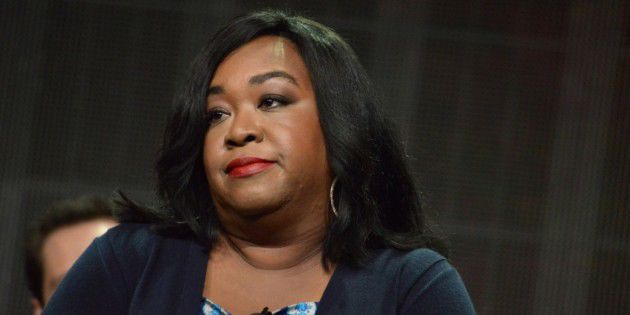Shonda Rhimes continues to impress viewers with her Thursday lineup
October 22, 2015
2015 truly is the year of women on ABC’s Thursday night primetime television. From 8 p.m. to 10 p.m. each Thursday, three shows with three powerful female leads dominate the airwaves.
The mastermind behind some of the most talked about television shows in history? One woman: Shonda Rhimes.
Rhimes single-handedly became the first black woman to create a Top 10 network series, she is single-handedly raising three kids, single-handedly running Thursday night television and, most importantly, Shonda Rhimes single-handedly ruined my life.
I’ve been told not to take it so personally, but how can I not? Like many devoted fans of Shondaland, Rhimes’ production company, each Thursday night I tune into ABC and wait to see if this week’s storylines will make me sob or swoon.
Week in and week out, Rhimes uses her beloved TV series to toy with her viewers’ emotions.
In the first episode of “Grey’s Anatomy,” Rhimes’ initial show, I tuned in to an involved adulterous relationship, a giant ferry boat crash and the near death of the main character, all neatly wrapped into 43 minutes of addictive television.
Ever since, I have been strapped into the tumultuous rollercoaster that is Shondaland.
Since day one, Rhimes has been pioneering new ground for television. For each of her three hit shows, Rhimes used “blind casting,” meaning actors auditioned for characters who had no set race, age, or personality.
As a result, Rhimes’ shows became the forerunners for both racial and gender diversity in primetime television casts.
Rhimes’ first show, “Grey’s Anatomy,” broke records upon its release in 2005 as the highest rated mid-season premiere of a series in almost two decades.
With 17 million viewers for its pilot episode, the medical drama, which centers on surgical intern Meredith Grey, played by Ellen Pompeo, captivates audiences not only with bizarre medical cases, but also with juicy romance arcs. Rhimes broke the hearts of millions last spring with the death of leading man Derek Shepherd.
Shepherd was one of the few surviving members from the original season of “Grey’s.” “McDreamy’s” unexpected, tragic death was spurred on by the behind-the-scenes conflicts with actor Patrick Dempsey. Since his departure, many fans questioned whether “Grey’s Anatomy” would be able to survive into its 12th season.
This cast shakeup came just one year after the departure of Cristina Yang, who Rhimes stated previously to Entertainment Weekly was Meredith’s true soulmate.
However, this fall’s season premiere finished with over nine million viewers, roughly even with the 11th season premiere and higher than the previous spring’s finale.
In the first month of the season, Rhimes has emphasized the girl power on the show.
Many of the scenes are dominated by women acting as sisters and friends rather than the competitors or enemies that many primetime shows display women in the workplace as.
For now, “Grey’s Anatomy” continues to chronicle the lives of Seattle’s finest doctors, leaving no boundary uncrossed as storylines such as divorce, spousal death, and same-sex relationships are confronted.
“Scandal,” Rhimes’ second stand-alone foray into primetime television, details the life of workaholic Olivia Pope, played by Kerry Washington, as she juggles her affair with the President of the United States with running her crisis management firm, Olivia Pope and Associates.
Many fans continue to tune in to the show because they are drawn to the main characters’ imperfect past.
The first network show with a female black lead since 1974, Rhimes’ hit political drama launched what became known as “The Scandal Effect” throughout television, as casts became more racially diverse and female oriented.
This was aided in part by the rise of social media sites like Twitter around the same time that “Scandal” premiered.
Each Thursday Twitter becomes overrun with fans tweeting their reactions to every jaw-dropping moment of “Scandal” directly at Rhimes, who even responds to some tweets.
America’s newest Shondaland obsession, “How To Get Away With Murder,” became Rhimes’ first series to open as a fall premiere rather than a midseason replacement.
“How To Get Away With Murder” puts a new spin on legal drama by focusing on a criminal law professor, Annalise Keating, played by Viola Davis, from a prestigious Philadelphia university.
Keating, who is also a brilliant defense attorney, and a group of her students become ensnared in a murder plot.
“How To Get Away With Murder” also stands out as the only show of Rhimes’ “Thank God It’s Thursday” trifecta to boast only 15-episode seasons.
Devoted Shondaland fans questioned whether the high intensity drama would survive its infancy.
After all, in regard to getting away with murder, one either gets away with it or is caught and convicted, neither of which lend to longevity for the series.
However, just when the drama seemed to be wrapping up, Rhimes ended the first season with a murderous plot twist and came back this fall with jaw dropping flash-forwards which have become the focus of much of the second season.
But how has Rhimes, the mastermind behind these shows, personally ruined my and about 17 million other lives?
Rhimes treats her characters as if they are real people, and Shondaland is a real place where anything can happen and characters aren’t guaranteed to have a happy ending. Much like the average person, Rhimes’ characters are not invincible.
Rhimes has toyed with audience emotions by leaving her characters cancer-stricken, heartbroken and ending more than one season with a character’s life hanging in the balance.
Much of the continued success of Rhimes’ shows can be attributed to the popularity of instant stream services like Netflix and Hulu.
Scandal’s entire first season, which premiered at the height of Netflix’s popularity among teens, could be found on the site just weeks after the season finale.
“Grey’s Anatomy’s” Pompeo attributes the show’s longevity to a new, younger generation of fans.
In a 2013 interview with TV Guide Pompeo said, “We have this whole other group of young people who are 13- or 14-year-olds—I’m always reminded on Twitter how young they are—that are just discovering the show and watching all nine seasons on Netflix all at once.”
Once you start binge-watching one series, you end up binge-watching them all. Rhimes’ shows become an addiction that, try as you might, you just can’t kick.
Even now that she has expanded to three shows, Rhimes is careful to make her influence known in each of them.
She attributes much of her success to her ability to appeal to the masses in a way that previous primetime series did not.
All three of Rhimes’ shows are built around strong, yet flawed, female characters.
The racial and personality diversity gives every audience member a character with whom they can relate.
And what pair of best friends hasn’t compared themselves to the unrivaled friendship between Meredith and Cristina?
My advice to you, readers, is to watch “Shondaland Thursday.” Rhimes has all her bases covered with medical, political and legal dramas, whose gripping storylines make for quality entertainment.
Becoming enamored by Shonda Rhimes’ Thursday night television trifecta has been both the best and worst entertainment decision of my life.
Yes, I am all consumed by the desire to kick everyone out of the lounge on Thursday nights to watch “Thank God It’s Thursday.”
Yes, I suffer Shondaland withdrawal every midseason hiatus.
Yes, I question my sanity during those three summer months I spend agonizing over the previous seasons’ mind-blowing cliffhangers.
And, yes, most of my friendships have stemmed from a common love/hate relationship with Shonda Rhimes herself.
Maybe Shonda Rhimes has ruined my life and forever altered the way I look at television, but Shondaland has become my person.
I picked it, I chose it, and I will always love it.












